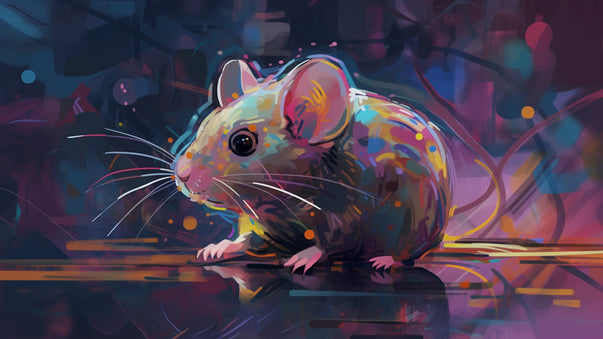Synthetic Antivirals Against COVID-19

Scientists at University of Washington have designed and synthesized miniproteins that act as potent and stable stable antivirals. They block coronavirus infection of cultured human cells (see below).
"Although extensive clinical testing is still needed, we believe the best of these computer-generated antivirals are quite promising," notes lead author Longxing Cao in a University of Washington press release. "They appear to block SARS-CoV-2 infection at least as well as monoclonal antibodies, but are much easier to produce and far more stable, potentially eliminating the need for refrigeration."
"Our success in designing high-affinity antiviral proteins from scratch is further proof that computational protein design can be used to create promising drug candidates," added Prof. David Baker.
Promise of Synthetic Antivirals for COVID-19
Researchers at University of Washington have shown that computer-designed miniproteins can protect lab-grown human cells from SARS-CoV-2. This is the coronavirus that causes COVID-19.
The new synthetic antiviral candidates were designed to prevent infection by interfering with the mechanism that coronaviruses use to break into and enter cells.
A study is published in Science. It indicates that the lead antiviral candidate rivals the best-known SARS-CoV-2 monoclonal antibodies in its protective actions.
DNA Nanotechnology for Cancer Immunotherapy
Scientists at Wistar Institute successfully delivered nanoparticle-based cancer vaccines. They stimulated robust cell immunity and controlled melanoma growth in preclinical models.
A research paper is published in Cancer Immunology Research. It suggests that DNA-launched nanoparticle vaccination (DLnano-vaccines), developed using synthetic DNA technology, may be designed for various types of cancer.
This could be a promising strategy for cancer immunotherapy.
Synthetic Molecular Bricks Kill Cancer Cells
Researchers at Max Planck Institute have found that the self-destruction mechanism of cancer cells can be activated. This is done by means of targeted and localized disruption of structure of the cells.
Laboratory experiments are described in a study published in Journal of the American Chemical Society. They have already demonstrated initial successes.
The researchers have synthetically produced molecular “Lego bricks” that travel into both normal and cancer cells. If indicators of cancer are found, the individual Lego bricks can connect and form a large web-like network.
The web grows inside the cancer cells. It is extremely stable and deforms the cancer cells from the inside out. Unable to cope with the physical stress, the cancer cell activates its own self-destruction mechanism.
Selectively Killing Cancer Cells
Scientists at Johns Hopkins Medicine and University of Oxford have suggested a new way to kill some multiplying human breast cancer cells. This is done by selectively attacking the core of their cell division machinery.
The technique has, so far, been tested only on lab-grown and patient-derived cancer cells. It is described in a research paper published in Nature.
The scientists are persuaded that the findings could advance efforts to find drugs that kill breast cancer cells in a subset of patients, and leave healthy cells unharmed.
Control Gene Activation in Biotechnology
Researchers at UC San Diego have solved a long-standing DNA activation code mystery. This was done with the aid of artificial intelligence.
Human genes are known to be activated through instructions delivered by the precise order of our DNA. But how three-quarters are turned on, or promoted, has remained a mystery so far due to the enormous number of DNA base sequence possibilities.
A paper was published in Nature. It identifies a frequently used DNA activation code. According to the researchers, it could eventually be used to control gene activation in biotechnology and biomedical applications.
Haptic Glove Mimics the Experience of Touch
Engineers at University of New South Wales have invented a soft wearable glove that simulates the sense of touch. It does this via soft, miniature artificial "muscles."
The new haptic glove is described in a research paper published in IEEE Access. It mimics the experience of touch by stimulating localized areas of the skin in ways that are similar to what is felt in the real world. This includes force, vibration, and motion.
The engineers plan to implement the device in various haptic applications. Examples include haptic motion guidance, navigational assistance for older people and those with low vision, and tactile textual language. Another example is 3D force feedback display for use in surgical robots, prostheses, and virtual and augmented reality.
Nanotech Drug Delivery for Cancer Treatment
Researchers at Tel Aviv University have developed a nanotechnology-based drug delivery system. It could significantly enhance the effectiveness of treatment for the aggressive skin cancer melanoma.
The new treatment was tested on laboratory mice. It showed promising results. They were reported in a study published in Advanced Therapeutics.
The nanocarrier is a biocompatible and biodegradable polymer. It comprises repeating units of glutamic acids. And it packages together two drugs belonging to different families with proven efficacy for the treatment of melanoma.
The nanocarrier has also been tested successfully for treating pancreatic, breast, and ovarian cancer in laboratory animals.
More Articles
Don't miss a beat! In our Pulse Newsletter, Thrivous curates the most important news on health science and human enhancement, so you can stay informed without wasting time on hype and trivia. It's part of the free Thrivous newsletter. Subscribe now to receive email about human enhancement, nootropics, and geroprotectors, as well as company news and deals.
Read more articles at Thrivous, the human enhancement company. You can browse recent articles in Thrivous Views. See other Pulse Newsletter articles. Or check out an article below.
-
New Drug Treats COVID-19 in Mice and Hamsters
A new drug, called "Ab8," shows promise in the fight against COVID-19 (see below). The tiny size of the molecules ...
-
Reactions to Neuralink Update
The Neuralink website has been revamped after the technology update released last week. Of course, the update has been widely ...


